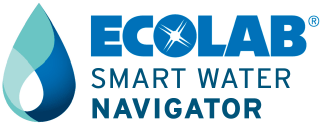By monetizing risk, the tool can help companies align water use with availability and quality factors and evaluate new infrastructure investments, procurement strategies, innovation and product portfolios. The information provided by the tool can be used to support a successful corporate water strategy.
Key attributes of a successful corporate water strategy
- Establish a water management plan and goals aligned with overarching business and sustainability strategies
- Assess and monetize business risks based on a holistic understanding of what water means to your business
- Prioritize actions and set context-based targets based on site-specific risk
- Identify opportunities to minimize water risk, maximize performance results and optimize costs (reduce, reuse and recycle)
- Execute water management plan using a “plan-do-check-act” cycle
The Water Risk Monetizer provides actionable information and directional guidance to help companies make decisions based on the intersection of growth goals, key business drivers and water-related risks.
Use the Water Risk Monetizer to:
- Understand the full value of water to an operation
- Identify operations/locations at greatest risk based on quantity and quality risks and growth projections
- Inform site-specific sustainable water withdrawal targets to contribute to risk reduction in a water basin
- Prioritize water conservation and reuse investments based on site-specific water risks
- Incorporate risk-adjusted incoming and outgoing water costs into a facility budget, financial projections, business scenarios, project proposals, etc.
- Make the case for proactive water management strategies by utilizing risk-adjusted costs to demonstrate potential risk-based return on investment compared to conventional modeling
- Select where and how to manage water intensity on a production or revenue basis
- Determine where to expand to meet demand in new regions
At an enterprise level, the Water Risk Monetizer can be used to evaluate and prioritize locations that are high priority (at highest risk) for investing in water efficiency and stewardship projects.
At a facility level, sustainable water withdrawal targets can be set, and risk-based return can be calculated to help prioritize investment projects. Facility managers should seek expert advice from solution providers about site specific conditions and the suitability of different solutions at these high-risk locations.
“When considering the various ways that Mondelez International addresses sustainability issues around the world, nothing is more important than conserving the valuable resource of water. We worked with Ecolab and Trucost to help develop the Water Risk Monetizer tool which will help us start to quantify water risk in financial terms, make more informed decisions to mitigate water-related risks and support company growth.” – Mondelez
Risk-based action planning
The information provided by the Water Risk Monetizer can be used to help businesses around the world better understand water risks and the potential cost implications of water quantity and quality at a particular facility. The data provides valuable information to help determine how water costs or scarcity may affect growth plans and inform business goals around prioritization of water management programs and local target-setting strategies. Facilities are categorized in one of four risk levels outlined in the table below.
Facility Risk Level |
Context |
Action |
Significant potential for business risk(High Growth – High Water Scarcity) |
Today, more than ever before, companies recognize that water poses a significant risk to business. For some facilities located in high water stress basins, urgent action is required to prevent threats to business vitality ranging from disruptions in operations and rising costs to reputational damage and loss of license to operate. Facilities in locations where high growth rates could be hindered by high water scarcity should take the following steps:
|
INVEST:
|
Moderate potential for business risk based on low growth potential(Low Growth – High Water Scarcity) |
Today, more than ever before, companies recognize the growing challenges posed by resource scarcity, population growth, energy demands, climate change and increasing competition for freshwater resources. Even at current use levels, companies operating in water scarce regions face increasingly tangible business risks. Water is a shared resource and therefore requires a stewardship approach to ensure sustainable outcomes for all.Good water stewards understand their own water use, catchment context and shared concerns related to water governance, water balance and water quality. With this awareness, good water stewards engage in meaningful individual and collective actions that benefit people and the environment. |
ENGAGE:
|
Low potential for business risk based on low water scarcity(High Growth – Low Water Scarcity) |
Water dependency is known but business risk is low because sufficient water is available given current conditions. To manage acute risks and prevent future risk, develop a plan to monitor changes in water quality and quantity. Update your Water Risk Monetizer risk assessment annually using updated growth projections. |
MONITOR:
|
Low potential for business risk(Low Growth – Low Water Scarcity) |
While water is necessary for operations, facilities with low growth potential in areas of low water stress face minimal business risk. |
CONTINUE ONGOING CONSERVATION:
|



